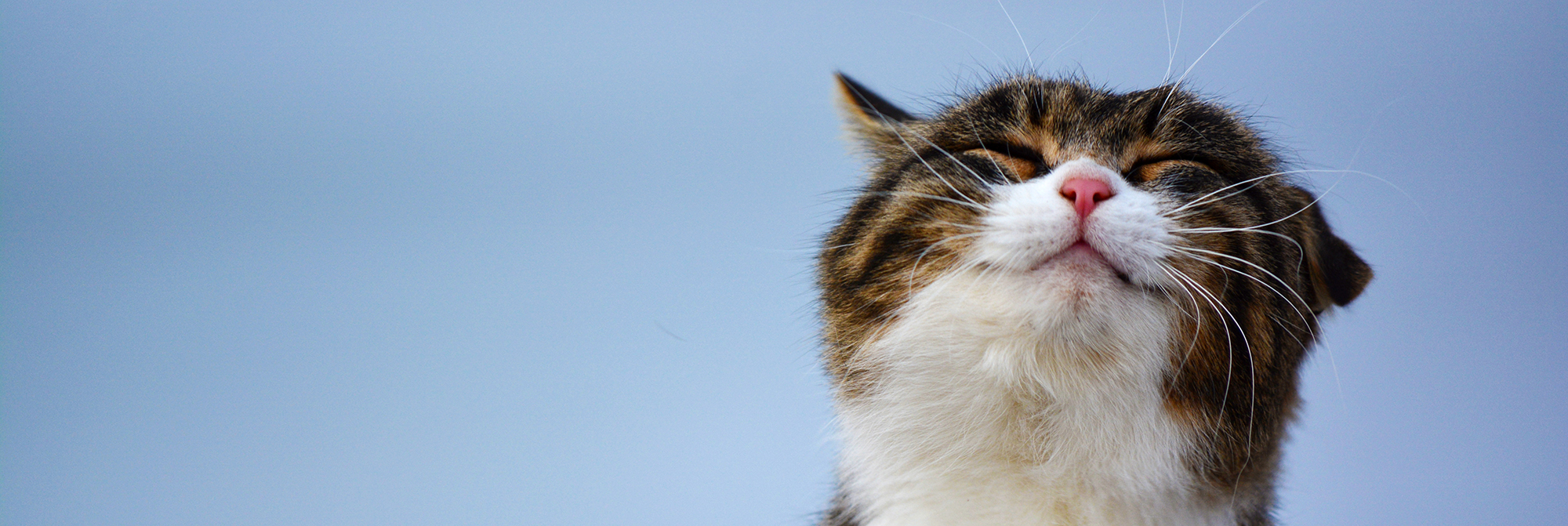Is your kitty inactive and overweight? Are they picky about new foods, especially canned meals? If your cat has a big bowl of dry food available at all times, you may see some or all of these side effects of free-feeding. Many people free-feed dry food to their cats due to its convenience, or out of concern that their kitty will be hungry while they’re out and about. In fact, switching your cat to measured, timed meals-—with a break from food in between-—actually promotes a healthy metabolism. It also makes introducing new foods easier and is better aligned with their natural biological cycle.
Timed meals mimic natural eating
Did you know that cats in the wild are genetically almost identical to our domesticated feline friends? A feral or wild cat hunts several times a day, most often at dawn and dusk, with periods of rest in between. This daily cycle allows the cat’s stomach to empty itself of food between meals and divert energy to the other parts of the body that need healing. When a cat has continual access to food, its body stays indefinitely in the digestive stage and does not direct therapeutic energy to the rest of the body. Feeding a cat twice per day on a 12-hour cycle, give or take a few hours, best mimics their natural eating habits. Cats spend the time between each meal resting or playing, enabling their body to perform critical cell repair and metabolic processes.
Picky kitty? Pick up the food dish!
So often we hear of cats who refuse to try new foods, usually canned options. These cats are very often accustomed to having a dish of their favorite dry food available at all times. When their customary meal choice is right in front of them, cats have little incentive to try something unknown. Additionally, the grazing habit they have adopted has not allowed their stomachs to properly empty, which eliminates the important sensation of hunger. Feeding timed meals is a major component in successfully transitioning cats to new foods, and pet parents usually have a much easier time getting their cat to eat a new food simply by switching to scheduled, metered feedings before rotating in new food options or introducing wet food to kibble-addicted cats.
Timed meals can prevent health problems
Obesity and diabetes are two major health problems that have been linked with free-feeding. Many cats graze throughout the day when food is left out, and eat more than their daily caloric requirement. This grazing habit only serves to push cats further towards health-compromising levels of obesity. Timed, measured meals make it easier to regulate a cat’s food intake and manage their weight. There is a growing body of evidence linking obesity to diabetes. The good news is that this serious and life-threatening condition can quite often be easily prevented or regulated through diet change. Because cats are obligate carnivores, they are biologically adapted to utilize meat protein, not carbohydrates, to meet their energy requirements. Replacing just one meal of a cat’s dry food with high-moisture, meaty canned or raw food will not only help promote a healthy weight, but the reduction in carbohydrates will prevent blood sugar spikes that can lead to diabetes. Please see our “The Best Way to Feed a Cat” handout for more information on how feeding raw or canned food can benefit your pet’s overall health and well-being.
Worried about a day out of town?
At times when you may be away overnight, consider finding a pet sitter to feed and check on your cat instead of leaving out a large bowl of food. Keep your cat’s best interests at heart and help them eat right, stay fit, and live a longer and healthier life with regular twice-a-day feedings.

